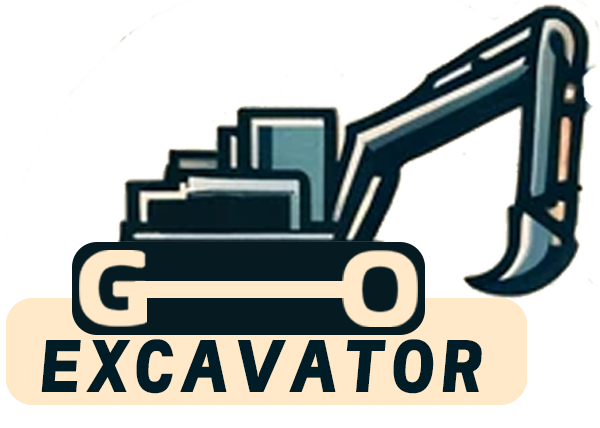
Excavators are powerful machines essential for various heavy-duty tasks, and among them, the world’s largest excavator stands out not just for its size but also for its capabilities. This article delves into the details of the world’s largest excavator, including its country of manufacture and its primary uses.
Introducing the World’s Largest Excavator
Overview
The title of the world’s largest excavator goes to the Bagger 288, a bucket-wheel excavator manufactured by the German company Krupp (now ThyssenKrupp). Built in 1978, this colossal machine has been a symbol of engineering prowess and continues to be a marvel in the field of heavy machinery.
Specifications
- Height: 96 meters (314.9 feet)
- Length: 225 meters (738.2 feet)
- Weight: Approximately 13,500 tons
- Bucket Wheel Diameter: 21.6 meters (70.9 feet)
- Power Consumption: 16.56 megawatts
Country of Manufacture: Germany
German Engineering Excellence
Germany is renowned for its engineering and manufacturing excellence, particularly in the automotive and machinery sectors. The construction of the Bagger 288 by Krupp is a testament to German innovation and capability in producing industrial giants.
History of Krupp
Krupp, now part of ThyssenKrupp, has a long history dating back to the early 19th century. Known for its contributions to steel production and machinery, Krupp has been a significant player in developing advanced industrial equipment, including the Bagger 288.

Uses of the Bagger 288
Primary Purpose: Mining
The Bagger 288 was primarily built for coal mining operations in Germany. Its immense size and power enable it to excavate vast amounts of earth and rock, making it ideal for open-pit mining.
- Coal Mining: The machine is designed to strip overburden before coal extraction, significantly enhancing the efficiency of mining operations.
Versatility in Heavy-Duty Tasks
Apart from coal mining, the Bagger 288 can be used for other large-scale earthmoving tasks. Its capabilities make it suitable for projects that require the movement of massive amounts of material.
- Land Reclamation: The machine can assist in land reclamation projects by moving large quantities of earth to reshape landscapes.
- Infrastructure Development: It can be used in large-scale construction projects where substantial earthmoving is necessary.
Environmental Impact
While the Bagger 288 is a marvel of engineering, its environmental impact cannot be overlooked. The machine’s operation in coal mining has significant implications for the environment, including habitat disruption and carbon emissions. Efforts are being made to balance its industrial benefits with environmental considerations.
FAQs
1. How much earth can the Bagger 288 move in a day?
The Bagger 288 can move up to 240,000 cubic meters (8.5 million cubic feet) of earth per day, making it extremely efficient for large-scale mining operations.
2. How is the Bagger 288 powered?
The Bagger 288 is electrically powered, requiring 16.56 megawatts of power to operate. It typically draws power from the grid through an extensive system of cables and transformers.
3. What are the main components of the Bagger 288?
The main components of the Bagger 288 include the bucket-wheel, the conveyor belts, the crawler tracks, and the operator’s cabin. Each part plays a crucial role in its operation, from digging and transporting materials to maneuvering the machine.
4. How does the Bagger 288 compare to other large excavators?
The Bagger 288 is larger than other excavators in terms of size, weight, and capacity. While other excavators may be used for various tasks, the Bagger 288’s sheer scale and efficiency in mining set it apart from the rest.
5. Can the Bagger 288 be used outside of mining?
While its primary use is in mining, the Bagger 288’s capabilities make it suitable for other heavy-duty earthmoving tasks. However, due to its size and power requirements, it is typically reserved for large-scale industrial projects.
The Bagger 288, the world’s largest excavator, stands as a monumental achievement in engineering and manufacturing, made in Germany. Its primary use in mining, along with its versatility in other heavy-duty tasks, showcases its importance in the industrial sector. While it brings remarkable efficiency and power to large-scale operations, balancing its benefits with environmental considerations remains crucial. Understanding the capabilities and impact of such massive machinery helps appreciate the advancements in engineering and their role in modern industry.
A Comprehensive Guide to Buying a Excavator Second Hand
Purchasing a second-hand excavator can be a cost-effective solution for your construction or landscaping needs. However, buying used machinery comes with its own set of challenges and considerations. This comprehensive guide will walk you through [...]
Comprehensive Guide to Hyundai Mini Excavators: Features and Prices
Mini excavators have become indispensable tools in the construction and landscaping industries. Hyundai Construction Equipment, a global leader in heavy machinery, offers a range of mini excavators known for their reliability, efficiency, and advanced features. [...]
How to Extend the Service Life of Excavator Parts
Excavators are indispensable machines in the construction and mining industries. They perform heavy-duty tasks that demand robust components and meticulous maintenance. Extending the service life of excavator parts not only reduces operational costs but enhances [...]
Kymron Excavators: Innovative, Sustainable Construction Machinery
In the dynamic world of construction and heavy machinery, Kymron has emerged as a game-changer. Specializing in advanced excavator technology, Kymron is redefining industry standards with its commitment to innovation, efficiency, and sustainability. Company Overview [...]
Bulldozer vs. Wheeled Excavator: Which Machine is Better for Moving Soil?
Moving soil is a fundamental task in construction, landscaping, and earthmoving projects. Choosing the right machinery for the job can significantly impact efficiency, cost, and project timelines. Two of the most commonly used machines for [...]
Why Are Small Excavators Favored? A Comprehensive Guide
In the world of construction and landscaping, efficiency and versatility are key. Among the myriad of machinery available, small excavators have risen in popularity. But what makes them so favored? Introduction to Small Excavators Small [...]




